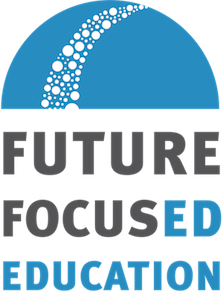4 Things Business and Community Leaders Should Know to Help our Schools Succeed
By Tony Monfiletto, Future Focused Education | June 7, 2018
Future Focused Education launched a paid internship program in 2017 because we knew young people were sacrificing their long term futures. Their families needed them to work, and as a result, they could not take advantage of unpaid internships like their more privileged peers. After a year of listening to employers and students talk about their experiences, I believe that our paid internship program is just the beginning of a vision to make our communities healthier and more prosperous.
The distinctions between schools and the private and non-profit sectors are a vestige of the past, yet we continue to put them into separate categories that no longer serve us. In fact, real life learning is essential for young people but it doesn’t happen nearly enough because it would require educators and employers to reach across boundaries. Our people are our best resource and building relationships across obsolete silos of school, and everything else, is our best chance to make our communities healthier and more prosperous. That will mean re-thinking our commitment to the Education Industrial Complex with all of its textbooks, standardized tests, and factory style schools. After all, schools are full of children who live in communities that are full of people with real world wisdom to offer. Real world learning has little to do with schools and classrooms as they currently function.
Here are a few things that I’ve learned over the past year since we began our paid internship program that can help us think about how we can break down the distinctions between schools and communities:
1. THE PRIVATE AND NON-PROFIT SECTORS ARE THE BEST PLACES TO LEARN HOW TO APPLY THE SKILLS STUDENTS LEARN AT SCHOOL.
Even the high quality project-based learning curriculum at the Leadership High Schools require a testing ground that can only be found through real-life experiences.
2. THOSE WHO LEAD ORGANIZATIONS IN THE PRIVATE AND NON-PROFIT SECTOR Should WORK DIRECTLY WITH STUDENTS.
Internships allow students to learn about how their adults adapt to better serve their clients and customers and how they consider the future of their organization in a changing landscape. Young people need to see how adults make decisions to serve entire organizations, their coworkers, and their clients and customers.
3. Students should have mentors who are invested in their success.
Mentors who understand the changing world and can can help guide students through adolescence and into adulthood. Workplace mentors in our community are essential if young people are going to have where-with-all to navigate college, a career, and citizenship.
4. CAREER EXPERIENCES THAT INCLUDE MENTORSHIP ARE ESSENTIAL FOR LOW INCOME YOUNG PEOPLE IF WE WANT THEM TO HAVE A POSITIVE OUTLOOK ON WORK.
Work should be a life giving experience, yet too many of our students exist in dead-end jobs that exploit them. They aren’t treated well and they get fired if they advocate for their own needs. Being told to work the midnight shift, “or else” does not endear them to work when they have class at 7:30 am the next day.
A vibrant economy and healthy communities are an essential building block to prosperity in New Mexico. We will spend $2.7 billion on public education in 2018 and it’s not enough. However, in our current design there will never be enough money to make our schools work.
I’ve spoken to many people outside our Education Industrial Complex and they see it in their interest to create meaningful partnerships with schools because they know that the young people in our communities need them. The question is, can we figure out how to let them join us to redesign our schools so that young people can benefit from the local wisdom right outside their doors?


